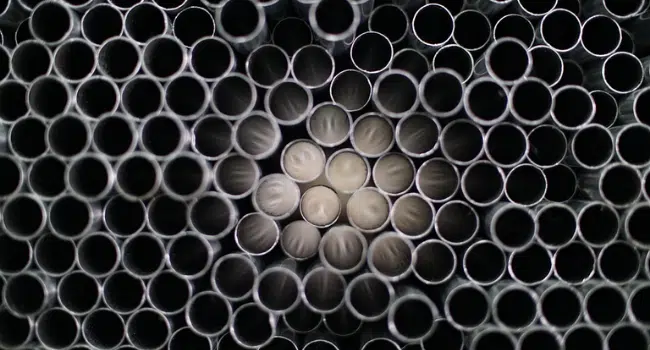In piping systems for the transportation of fluids or gases, stainless steel pipe is most commonly used. The corrosion-resistant properties of stainless steel come from an alloy of steel containing nickel and chromium. Due to its corrosion resistance, stainless steel pipe can be used in high-temperature and chemical applications with little maintenance. The easy cleaning and sanitizing ability of stainless steel pipe makes it suitable for applications involving foods, beverages, and pharmaceuticals.
A welding process or an extrusion process is commonly used in amardeep steel to manufacture stainless steel pipes. As part of the welding process, steel is shaped into a pipe shape and then joined together with seams to hold it in place. Steel rods are heated and then punched in the middle to form a seamless pipe by extrusion.
Pipes made of stainless steel are durable and corrosion-resistant:
Stainless steel pipes are available from Totten Tubes in both 304/L and 316/L grades of steel and are welded to meet ASTM A-312 and ASME SA-312. Our welded stainless pipe is generally available in nominal sizes between 1/8″ and 24″. The seamless stainless steel pipe that we offer in the grades 304/L and 316L is also manufactured to ASTM A-312. Stainless seamless pipes typically range in nominal size from 1/8″ to 8″.
Stainless steel pipe is commonly used for the following purposes:
- Automotive components
- Pharmaceuticals
- Construction
- Chemical applications
- Fertilizers and pesticides
- Oil and gas processing
- Plants for treating water
- Breweries
- Textile operations
- Food processing
304 and 316 Stainless sheets of steel Are Different. What Is The Difference?
There is a wide range of products made from stainless steel pipes and tubes in the 300 series, as it is also known as a chromium-nickel alloy. The strength of 304 and 316 steel pipes is maintained at high temperatures, with resistance to corrosion, and ease of maintenance. You should select your pipe materials based on how they will be used and where they will be installed.
Because of its corrosion resistance and ease of sanitization, type 304 stainless steel is the most common type used. Food and beverage applications and building applications often use this kind of steel.
As with Type 316 stainless steel, M6 stainless steel is corrosion-resistant and easy to clean, however, it resists corrosion caused by chemicals and solvents more effectively. Therefore, 316 stainless steel is more suitable for industrial applications and surgical procedures, as well as outdoor and marine applications since it is more resistant to chloride corrosion.
You can benefit from stainless steel pipes in a variety of ways:
Material such as stainless steel is highly versatile and can be used to manufacture a broad range of products both indoors and outdoors. Your pipe project can benefit from stainless materials in several ways, including:
- Lightweight
- Long-lasting
- Durable
- Easily handles large flows
- The machine is easy to use
- Protected against scratches
- Simple to sanitize
- Easy-to-maintain
- The anti-corrosion properties are superior
- Eco-friendly, recyclable material
Conclusion
Tubes and pipes are both commonly used to describe the same product, but there are differences that should be understood. The outside diameter (OD) and wall thickness of steel tubes and pipes are measured by the different measurements of their inner diameters (IDs). Similarly, tubes are used as structural components, while pipes handle fluids and gases.
Read More on KulFiy:
